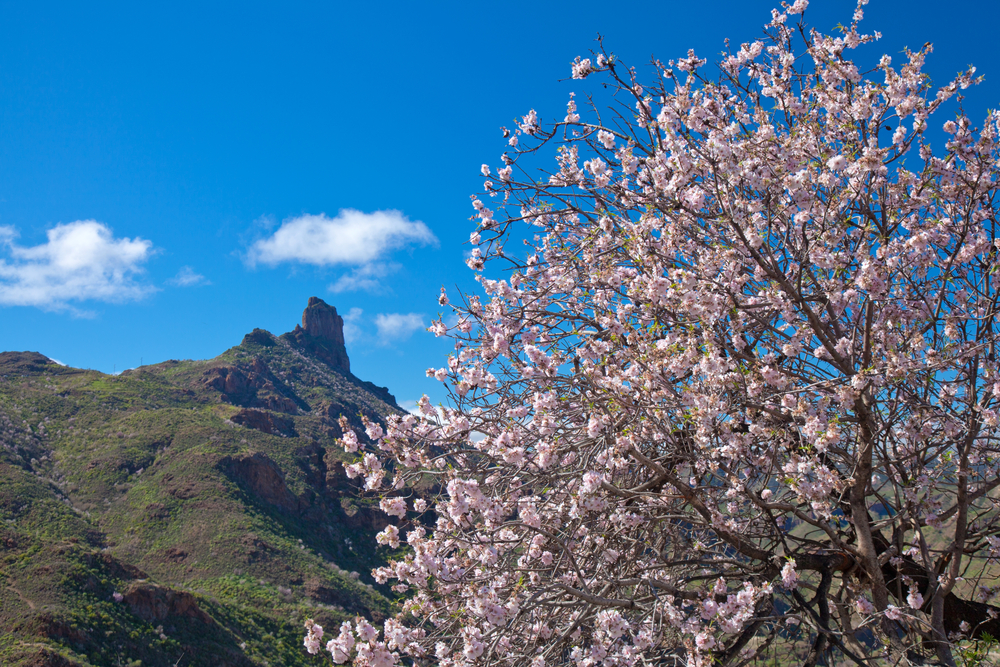We know that Spring has arrived in the Canary Islands when we see the first flush of flowers on the many magnificent almond trees that embrace the islands. These beautiful flowers, which begin to open after Christmas, create a magnificent and rich landscape of colour. At the end of January and the beginning of February, almond trees demonstrate their full glory, encouraging celebrations in many towns and villages.
Canarians never need much of an excuse to have a party, so this spectacle of natural beauty to celebrate the beginning of a New Year, doesn’t need much encouragement.
The Canary Islands were the crossroads between Europe and the Americas for many years. As a result, the islands can boast a rich and varied cuisine, offering a unique blend of flavours that is influenced by Africa, Europe and America.
Without going into too much detail here, there is accumulating genetic evidence which suggests that much of the material used for horticulture in the Americas came directly from the Canary Islands.
These islands had centuries of trade with Berbers, Phoenicians, and other ethnicities in Morocco, but were only under Spanish control for about 50 years before Columbus. Many believe that the booming almond trade in the United States originates from the Canary Islands.
Many people do not give much thought to almonds, but they have always been a most important part of the cuisine of the Canary Islands. Almond products are many and varied, and used in biscuits and cakes.
Almonds can also be mashed into a paste that can be spread on bread – a bit like peanut butter, but without the butter. Almond milk, almond drinks, almond wine and marzipan, as well as almond cakes can easily be found in shops and markets on the islands for most of the year.
Almond trees are found on the greener parts of the Canary Islands. In Puntagorda, on the island of La Palma, a beautiful festival is held at the end of January or beginning of February each year. Parts of Gran Canaria and Tenerife become spectacular gardens of pink and white blossom, particularly around Santiago del Teide and the slopes of Vilaflor in Tenerife.
In Gran Canaria, a visit to the Almond Flower Festival in the village of Tejeda is always a must-visit destination at this time of the year. The festival has been celebrated in this beautiful village since 1972, which acts as a reminder of the importance of almonds to the baking industry of the islands. Dancing and songs against the spectacular and colourful backdrop of the almond trees can be an unforgettable experience.
Crowds of people make their way singing and dancing to native guitar music on the narrow road leading to the church. Many dress in national costume for the event and there are opportunities to sample the local wine and almond based products. There are also opportunities to watch the almonds being cracked and maybe hear almond pickers speaking about their trade.
Spain is the world’s second largest almond producer after the United States, and with a large proportion produced in the Canary Islands. It is no wonder that these nuts are so highly prized, and well worth having a party to celebrate. It is also worth remembering where the nuts come from.
If you enjoyed this article, take a look at my websites: http://barriemahoney.com and http://thecanaryislander.com or read my latest book, ‘Footprints in the Sand’ (ISBN: 9780995602717). Available in paperback, as well as Kindle editions.
Join me on Facebook: @barrie.mahoney
© Barrie Mahoney





